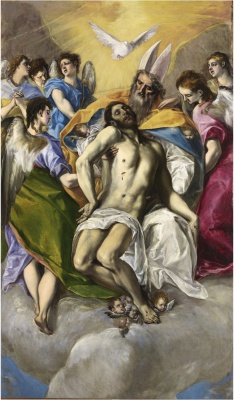Descripción de la Exposición Gucci Museo announces Joana Vasconcelos as the fourth contemporary art exhibition of works organised thanks to M. François Pinault. Curated by Francesca Amfitheatrof. We are proud to present exemplary works: Red Independent Heart (2010), Psycho (2010),Lavoisier (2011) and Hand Made (2008). Vasconcelos' art practice is characterized by a decontextualisation of the familiar - be they household objects, plastic spoons or national icons - and the deconstruction of how we identify things, particularly gender, class, and nationality. There is a political current to Vasconcelos' work: the revolution of 1974 and the stifling patriarchal culture of the Salazar years form the backdrop and counterpoint to her ferociously energetic reinvention of Portuguese, and specifically female, identity. She has inherited and assimilated the visual language and themes of Duchamp's readymade; the pop art of mass consumption exemplified by Warhol and Oldenburg; and the subversive, at times humorous, feminist voices of Louise Bourgeois and Eva Hesse. Perhaps more importantly, she incorporates traditional Portuguese crafts such as crochet, filigree and ceramics into her work, both as art practice and as historical subject matter. Red Independent Heart (2008) Suspended from the main gallery ceiling, Red Independent Heart is formed of thousands of translucent red plastic knives, forks and spoons half melted and shaped in an iron framework to create a beautiful, gracefully rotating heart-shaped form accompanied by the sound of traditional Portuguese fado singing. The heart is in fact a plastic rendition of a popular piece of Portuguese jewellery, The Heart of Viana, recreated on a monumental scale: it originates from the town of Viana do Castelo in North West Portugal, made using the technique of filigree - a craft rather like lace-making, using metal rather than thread, and practiced in the town since the middle ages. Fado gives the work its title: it is a lyric from the song 'Strange Way of Life' and brings to the work another element of Portuguese history, the songs of performer Amália Rodrigues, whose much loved voice has dominated Portuguese popular culture since the middle of the 20th century, and is as familiar and pervasive a symbol of Portugal as The Heart of Viana it accompanies. Lavoisier (2011) works on a more domestic scale, but is just as rich in meaning. It is made up of a stainless-steel kitchen sink entwined in the brightly coloured textiles that form so much of Vasconcelos' work. The crochet-work links this piece to a key idea explored on a much larger scale in one of her most famous works, Contaminacion (2008). The handmade nature of the textiles, their soft texture, and their dazzling bright colours create a counterpoint to the machine made, grey-steel, stifling domesticity of the kitchen sink. They envelop it with an uplifting creativity, echoing the invasive, subversive nature of Contaminacion, The work speaks of the relationship between the modern industrial world and the traditional artisan world, the human and the modern, the ambiguity of progress. Psycho (2010) continues the theme and takes it a stage further. It is made up of two stainless steel showerheads linked together by a flowing tube of crochet-work, glass beads, and polyester, all in an aqueous palette of blue and green. Its title is familiar to us from the 1960 Hitchcock film in which the shower scene has come to represent an iconic image of violence against women. Again we have the dazzling textiles and the domestic setting, but now with the sinister reference to Hitchcock and violent emotion. The title Psycho seems refers not only to the showerheads but also, in a more positive way, the manic energy of the snake-like textiles. It gives expression to a key theme in Vasconcelos' work - the dichotomy between reason and emotion. Hand-made (2008) documents, in a looped video projection, the handcrafted work in crochet and knitting, of five women of different generations, countries and cultural backgrounds. The permanent circular travelling of the camera portrays the work and socializing between the protagonists, on a trip that covers some of the most emblematic examples of Portugal's architectural heritage, from the megalithic Almendres Cromlech, to the Pena Palace, the epitome of Romantic architecture in Portugal 1, highlighting the documental character of the project. 'Hand-made' thus reveals an intricate web of relations of an ethnographic, sociological and historical meaning. Joana Vasconcelos is a Portuguese artist born in Paris in 1971. She studied at the Ar.Co Centre for Art and Visual Communication in Lisbon from 1989-1996 and first came to global attention at the 2005 Venice Biennale with her work A Noiva (The Bride). A witty riposte to Marcel Duchamp's 'The Bride Stripped Bare by Her Bachelors, Even', it consists of a 5 foot chandelier made entirely from 25,000 tampons. She was the first female artist to be invited to show work at The Palace of Versailles in 2012 and is the sole Portuguese representative of The Venice Biennale 2013.

Exposición. 18 feb de 2025 - 15 jun de 2025 / Museo Nacional del Prado / Madrid, España

Formación. 01 oct de 2024 - 04 abr de 2025 / PHotoEspaña / Madrid, España